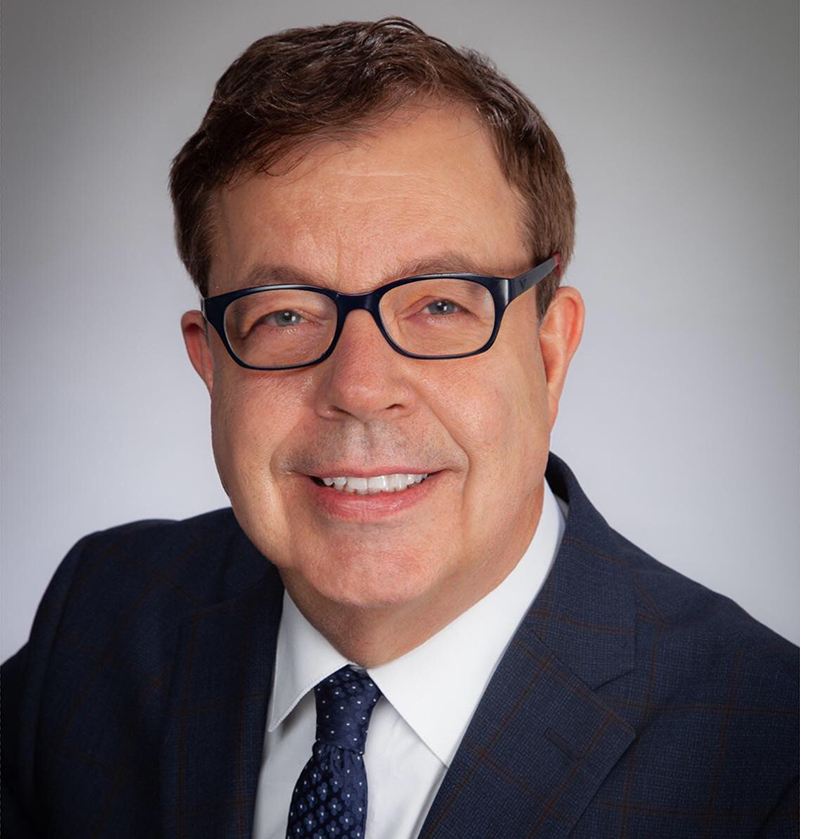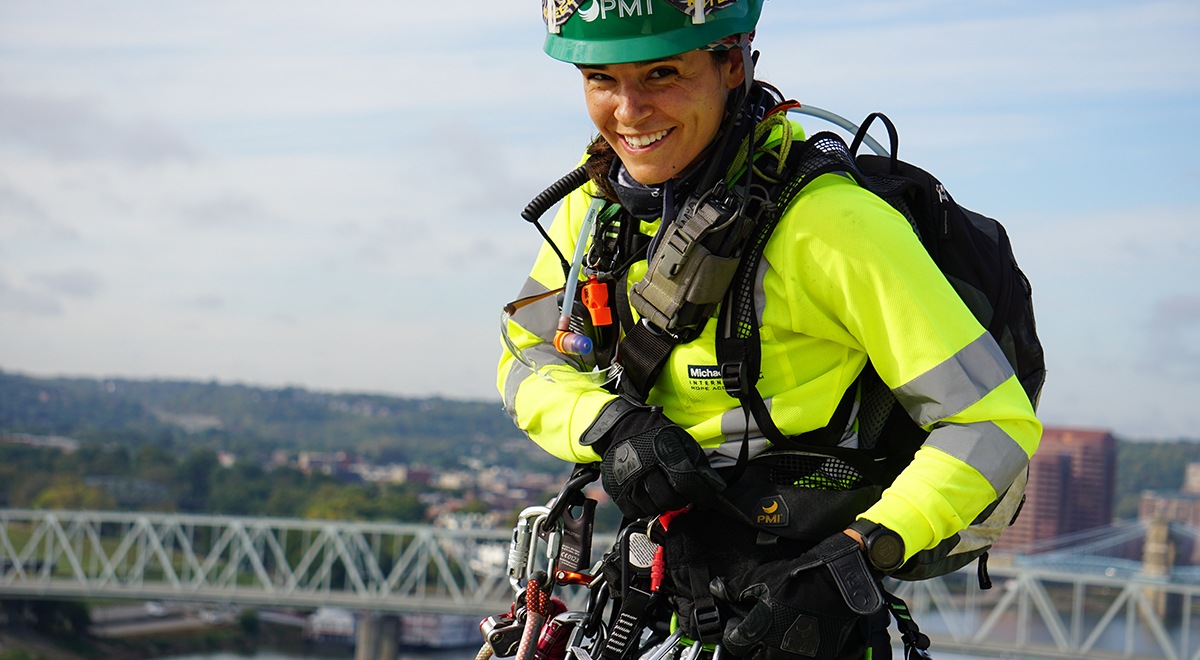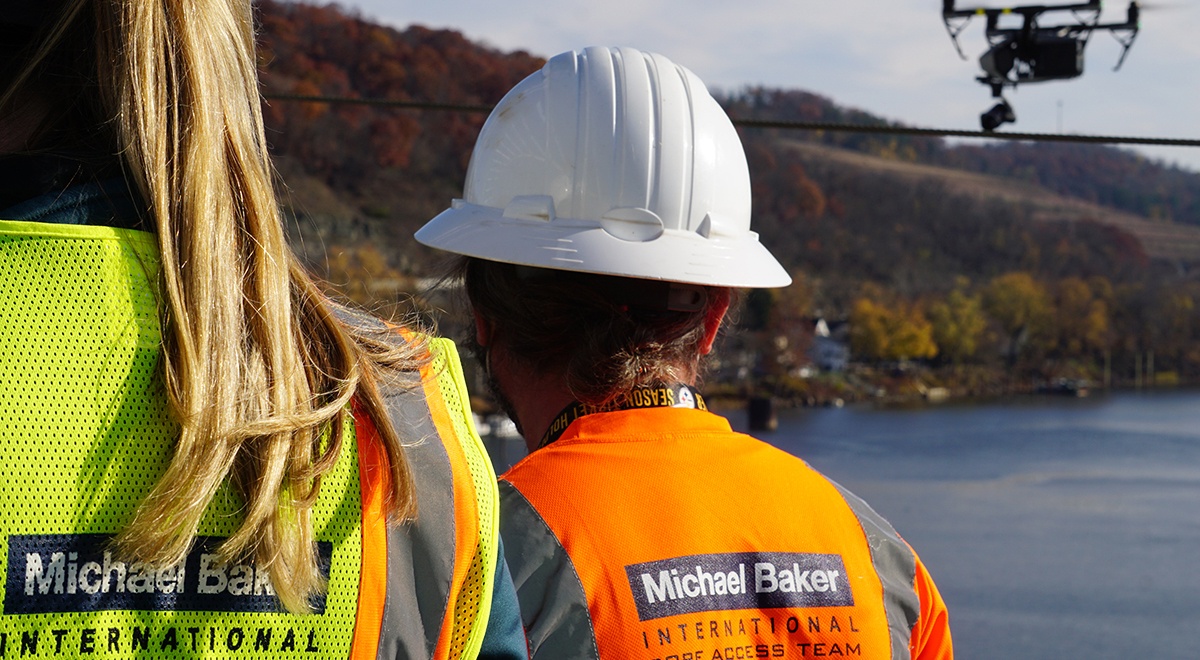As the transportation needs of our communities and our country continue to evolve, the Planning industry plays a leading role in helping clients prepare for the future. Niek Veraart shares his insights.
From the Summer 2021 issue of Signature
What is “active transportation” and how is it impacting urban planning?
Active transportation is any self-propelled, human-powered, non-motorized mode of transportation, such as walking or bicycling. It has become an important part of urban planning and can reduce demand for road infrastructure, improve multimodal network performance, enhance safety, improve community health, and reduce the construction and maintenance costs of traditional vehicle-oriented roads. It can also support the development of vibrant cities and increase mobility for groups such as children and the elderly.
The challenge of these solutions is that they often need to be retrofitted into existing built and natural environments. They also need a certain amount of geographical coverage or “network” to be effective as alternative means of transportation. This is where Michael Baker’s design services, such as those of the Urban Design Studio, our planners, landscape architects, architects, urban designers, engineers and historic preservation specialists across the company, play a critical role as they design ecosystems that also serve as active transportation routes and enable integration of bicycle and pedestrian routes in the transportation network.
While this retrofitting is a challenge, our need to make changes to our environment represents a great opportunity to transform our communities and improve the quality of life for all.
How are planners approaching Green Infrastructure initiatives?
While originally conceived as a more sustainable way to address stormwater flood impacts and improve water quality, Michael Baker’s planners have been approaching it from a “whole street” perspective, where we not only address flooding but create green open spaces, bicycle and pedestrian paths, and overall improvements to health and access within a community. We’ve done that on a citywide scale for New York City’s Green Infrastructure program and on a local scale with the Bow Creek Stormwater Park in Virginia Beach, Virginia, and the Northwest Resiliency Park in Hoboken, New Jersey.
On a larger scale, Michael Baker is developing Resilient Design Guidelines for Coastal Highways for the California Department of Transportation, focusing on natural and nature-based solutions to address sea level rise and erosion in coastal areas that can impact the transportation network. The trend toward more sustainable planning is reflected in our “Green and Sustainable” project portfolio, which has increased by more than 50 percent, as reported by Engineering News-Record.
How is the Complete Streets movement influencing how we design transportation infrastructure?
Something we’ve focused on for years that is becoming even more prevalent, is the notion of Complete Streets, the idea that communities want to improve quality of life by creating a better, more comprehensive transportation infrastructure. Complete Streets stresses the importance of improved safety, health, economic and environmental outcomes. Beyond aesthetics, Complete Streets emphasizes greater mobility choice, balancing the interests of pedestrians, cyclists, motorists, and all transit users — and I believe Complete Streets will continue to grow in popularity. There is an interesting link between Complete Streets and the economic vitality and quality of life in a community. Accelerated by the “residential retreat” of the pandemic, existing residential areas are recognizing the benefits of having services and retail within walking and biking distance from home — the so-called 15-minute neighborhood. Complete Streets incorporates neighborhood services and economic activity within it’s street profile and is a natural solution to this new demand. Our economists and urban designers are aware of this and have also started to revitalize communities by introducing sidewalk dining and new bike and pedestrian connectivity.
Another item to address is Smart Streets, which is where optic fibers, sensors and wireless communication technologies can be used to better understand and manage traffic, parking and infrastructure and improve safety for all users. This isn’t as mainstream yet, but we’re seeing communities preparing their streets for that in the future.
What is asset management of traffic structures, and how can technology play a role?
Michael Baker is actively involved in taking inventory of traffic structures, including traffic lights, poles, and pavement. Integrating the effective flow of vehicle and pedestrian traffic across the same roads, intersections and pathways is an ever-evolving challenge. We’re doing an asset management inventory for the Texas Department of Transportation, and projects such as these could potentially use Unmanned Aerial Systems (UAS), i.e., “drones” and other technologies, to perform rapid inventories of their traffic structures and recommend an approach to most efficiently address any issues.
Drones and associated intelligent data can help maximize the value of existing transportation assets. By proactively searching out and monitoring developing issues, potential patterns of issues or processes can be identified before they become larger problems that necessitate costly repairs and replacements, asset downtime and exposure to safety risks.
Key in this is not only the data collection, but the creation of actionable intelligence out of that data through machine learning and other computational tools that enable predictive maintenance. Smart data can help us repurpose existing transportation infrastructure and make it more adaptive to varying needs, thereby getting more out of investments already made and reducing capital cost, an issue especially relevant in times when transportation agencies are under increased monetary pressure. Those are examples of how we leverage technology to be more efficient and provide the best solutions for our clients.
What role does transportation play in planning for resilience and sustainability?
Transportation planning is one of the most important drivers for sustainability and resilience. Consider the impact of extreme weather and climate risk on our transportation systems, as well as other risks such as pandemics and terrorism. Consider also the role of transportation in our carbon footprint. Transportation has an important equity dimension, as access to resilient and sustainable transportation means access to jobs, culture, education and open space. We’re finding that what resilience and sustainability have in common is the role that system diversity plays in adaptability. Areas that have diverse transportation systems with a mix of mobility options are less vulnerable and can bounce back more quickly and reinvent themselves with greater efficiencies post-disaster, while leveraging new technologies that improve access, service and safety and reduce costs long-term. Understanding the vulnerability of our transportation systems and how they interact with local and regional economies, communities and the environment is key to developing robust, sustainable and inclusive solutions. Michael Baker is at the forefront of that, from both a research and a practical perspective. Examples of our work include the Pennsylvania Department of Transportation Extreme Weather Vulnerability Study, Transportation Electric Vehicle Readiness Study for the Virginia Office of Transportation Research and Innovation, and Action Plan for the Jacksonville Transportation Authority.
Scenario Planning is a key tool that our planners use to project future transportation needs and develop data-driven and risk-based solutions, especially when conditions are uncertain and can change rapidly. Transportation planning is a key aspect of our national security, as the resilience of our defense installations depends not only on what happens inside the fence line but also what happens outside the fence line, as Department of Defense supply chains are increasingly dependent on the civilian market and transportation infrastructure. Our federal, transportation and urban planners are already working to ensure that our transportation systems become more resilient, sustainable and efficient.
About Niek Veraart

 Niek Veraart, AICP, ASLA, ENV SP, is Senior Vice President and National Practice Lead – Planning for Michael Baker International. He is responsible for engaging across our client base, including federal, state and local clients, communities and private sector clients. He also collaborates with Planning staff throughout the company to deliver integrated and innovative solutions that are sustainable, resilient and inclusive.
Niek Veraart, AICP, ASLA, ENV SP, is Senior Vice President and National Practice Lead – Planning for Michael Baker International. He is responsible for engaging across our client base, including federal, state and local clients, communities and private sector clients. He also collaborates with Planning staff throughout the company to deliver integrated and innovative solutions that are sustainable, resilient and inclusive.
Veraart brings to Michael Baker more than 30 years of industry experience, including a wealth of knowledge in planning and national regulatory practices. Before joining Michael Baker in 2019, he was Vice President of WSP. His career also includes time with Weston as Director of Environmental Planning and with HOK as a Landscape Architect.
Veraart earned a Master of Science degree and a Bachelor of Science degree — both in Engineering, Planning and Landscape Architecture — from Wageningen University in Wageningen, Netherlands. He is a member of the American Institute of Certified Planners, American Society of Landscape Architects, National Association of Environmental Professionals, a certified Envision Sustainability Professional and an affiliate member of the American Society of Civil Engineers.




